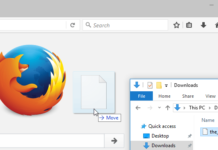Welcome to the vibrant cosmos of digital connectivity, where the beat of customer relationships has found its groove—enter the Multimedia Messaging Service API. This isn’t your average tech tale; it’s a journey through a universe where pixels have personalities, and messages become an electrifying dance of visuals and vibes. Get ready for an odyssey where every interaction is a plot twist in the epic saga of connection and communication.
Understanding Multimedia Messaging Service API
Multimedia Messaging Service, or MMS, is a communication technology that allows the exchange of multimedia content, including images, videos, and audio, through mobile devices. An MMS API, or Application Programming Interface, serves as the bridge that enables seamless integration of MMS capabilities into various applications and systems. This integration empowers businesses to enrich their communication strategies by incorporating visually compelling elements beyond traditional text messages. The flexibility offered by Multimedia Messaging Service API opens up a world of possibilities for creative and impactful customer engagement.
Enhancing Visual Communication
In the realm of customer relationships, visual communication is a key player in capturing attention and conveying messages effectively. Multimedia Messaging Service API allows businesses to go beyond the constraints of plain text, enabling the inclusion of images and videos in their communications. For instance, a retail business can send images of new products or promotional videos directly to customers’ devices. This not only enhances the overall user experience but also provides a tangible way for customers to interact with the brand. Businesses may harness the power of visual material to create memorable and tailored experiences that connect with their audience more deeply by utilizing the Multimedia Messaging Service API.
Personalization and Customer Engagement
The beauty of Multimedia Messaging Service API lies in its ability to facilitate personalized communication. By incorporating multimedia elements, businesses can tailor their messages to align with individual preferences and interests. For instance, an e-commerce platform can send personalized product recommendations in the form of visually appealing images or videos. This degree of customization raises the possibility of favorable reactions and conversions while also deepening the relationship between the company and its clientele. Multimedia Messaging Service API, as a tool for personalized communication, empowers businesses to stand out in a crowded digital landscape and foster stronger, more meaningful customer relationships.
Real-Time Interactivity
One of the distinct advantages of Multimedia Messaging Service API is its support for real-time interactivity. Businesses can engage with their customers dynamically by sending interactive multimedia messages. For example, a food delivery service can send visually appealing menus with interactive buttons for ordering directly from the message. In addition to streamlining the client experience, this real-time contact also offers convenience. Multimedia Messaging Service API, with its ability to facilitate instant responses and actions, contributes to creating a seamless and responsive communication channel between businesses and their customers.
Strengthening Brand Image
In today’s cutthroat business environment, building a solid and favorable brand identity is essential. Multimedia Messaging Service API serves as a valuable tool for businesses to showcase their brand personality through visually captivating content. Whether it’s sharing behind-the-scenes glimpses through images or conveying the brand story through engaging videos, Multimedia Messaging Service API allows businesses to shape how their audience perceives them. Customers’ sense of trust and loyalty is fostered and brand authenticity is built thanks to this visual storytelling capacity.
Analytics and Optimization
To refine and optimize communication strategies, businesses need insights into the performance of their messaging campaigns. Platforms for APIs for multimedia messaging services frequently include analytics tools that offer useful information on user interaction, message delivery, and conversion rates. Businesses can make data-driven changes to improve future encounters by gaining a greater understanding of customer preferences and habits through the analysis of these indicators. The integration of analytics within the Multimedia Messaging Service API not only facilitates continuous improvement but also ensures that businesses can adapt their communication strategies to meet evolving customer expectations.
Conclusion
The Multimedia Messaging Service Application Programming Interface represents a powerful tool that goes beyond traditional text-based communication, offering businesses the ability to engage customers through visually compelling multimedia content. From enhancing visual communication to facilitating real-time interactivity, Multimedia Messaging Service API plays a pivotal role in strengthening customer relationships. The personalization options, coupled with the ability to showcase brand identity, contribute to creating memorable and impactful interactions. As businesses navigate the digital landscape, the integration of Multimedia Messaging Service API emerges as a strategic choice for those seeking to elevate their communication strategies and foster long-lasting connections with their audience.









